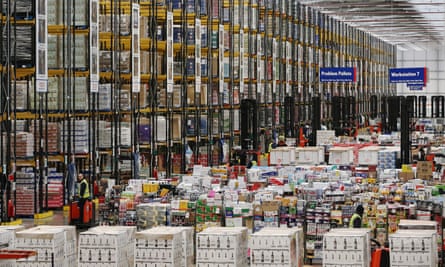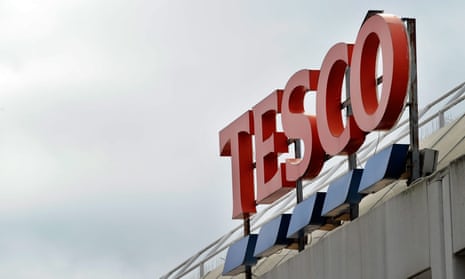Tesco is closing two distribution centres in a shakeup of its UK operations that will reduce staff numbers by about 500.
Britain’s biggest retailer will close warehouses in Welham Green, Hertfordshire, and Chesterfield, Derbyshire, as well as overhauling the management of its distribution network.
This will lead to 1,015 jobs being cut, including 444 at Welham Green, 207 at Chesterfield and 364 in the warehouse management team.
However, Tesco intends to create 533 jobs elsewhere in its network, including at warehouses in Reading, Middlesbrough and also in Daventry, Northamptonshire. Some of the affected staff could find different roles within the company.
The changes are part of an overhaul of Tesco under chief executive Dave Lewis designed to revitalise the retailer after a slump in sales and profits.
Matt Davies, Tesco’s UK chief executive, said: “As the needs of our customers change, it’s vital we transform our business for the future. As part of this we are proposing to close two of our distribution centres in the UK. These changes will help to simplify our distribution operations so we can continue to serve our customers better.
“Our priority throughout this process has been our colleagues and we will continue to do all we can to support them at this time.”
The changes will reduce the number of distribution centres that Tesco runs in the UK to 23. The company will move its grocery operation at Welham Green to Reading, while the majority of its non-food products will be distributed from Middlesbrough after the closure of its Chesterfield site.

In addition, Tesco will bring all warehouse operations run by logistics groups DHL and Wincanton in-house. This includes withdrawing from a clothing warehouse run by DHL in Daventry and moving its operations to a Tesco centre nearby.
Tesco reported a £6.4bn pre-tax loss in 2015, one of the biggest in British corporate history, after a fall in sales and the discovery of a £326m accounting scandal.
Since then, Lewis, who was hired from Unilever, has attempt to rebuild Tesco by cutting prices, introducing new product ranges and improving the availability of key products.
However, although like-for-like sales have picked up again in the UK, profits have remained stubbornly low as the company invests in cutting prices and improving its shops. Tesco recorded a 28% fall in pre-tax profits to £71m in its most recent half-year results. In response, Lewis told investors that he had an ambition to improve Tesco’s operating profit margin to between 3.5% and 4% by the end of the decade. It was 2.2% in the last financial results.
Tesco, which employs more than 300,000 people in the UK, is scheduled to unveil its trading figures for the vital Christmas period on Thursday.
James Anstead, analyst at Barclays – one of Tesco’s house brokers – has predicted that the supermarket chain will report that sales during the six weeks to 7 January were flat on the same period the previous year.
Anstead said: “If our forecasts are correct we expect Morrisons to be most pleased with the way in which trading panned out, although we also expect further evidence of Tesco’s ongoing momentum.
“We do know that Tesco’s UK business had a relatively strong Christmas period last year [2015]. That fact does not necessarily bode well for what Tesco might have delivered in December 2016 – especially considering the underwhelming showing from the company in the most recent set of market share data.”

Comments (…)
Sign in or create your Guardian account to join the discussion